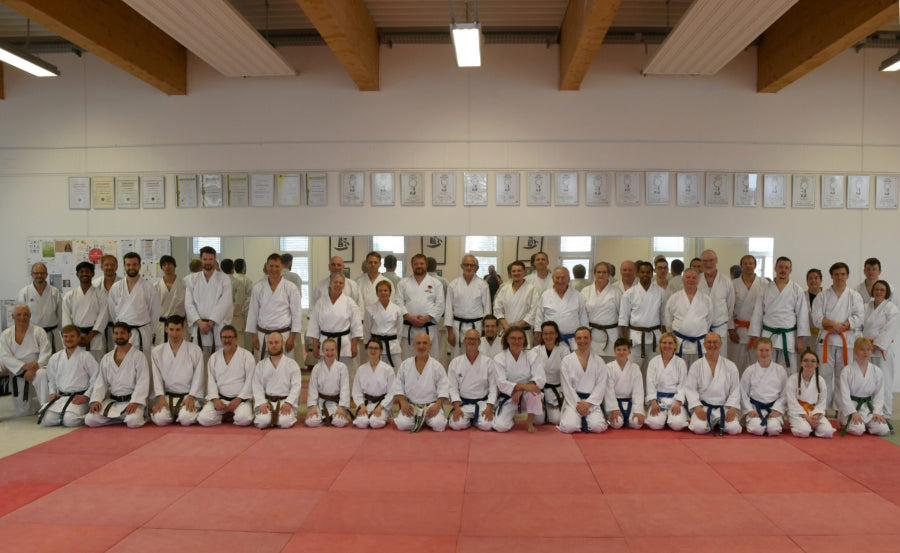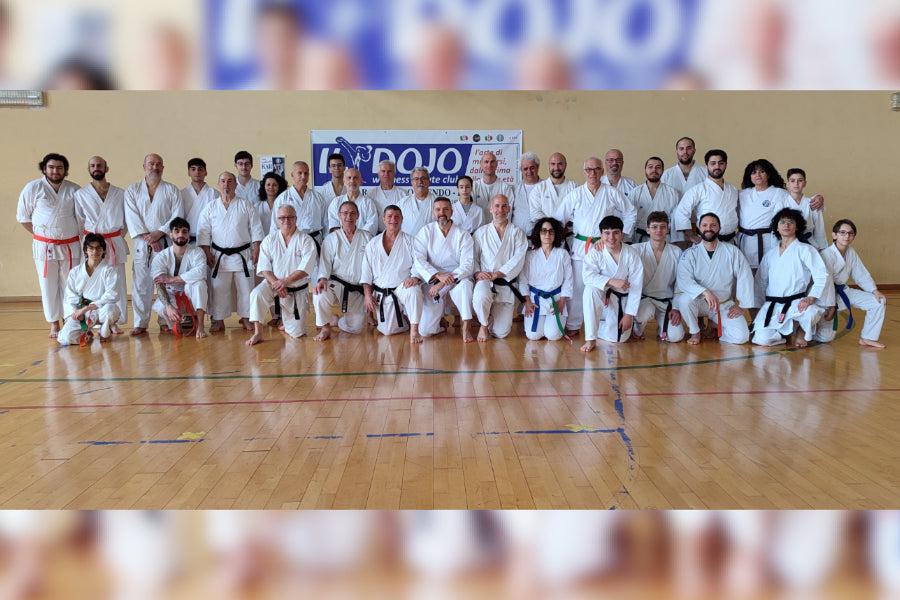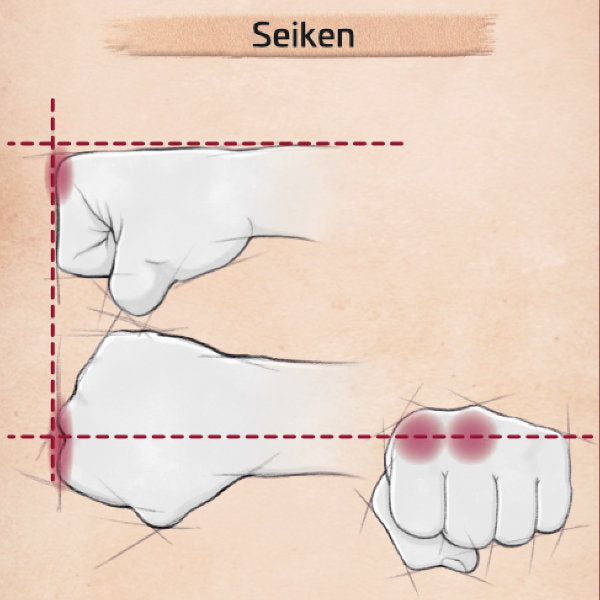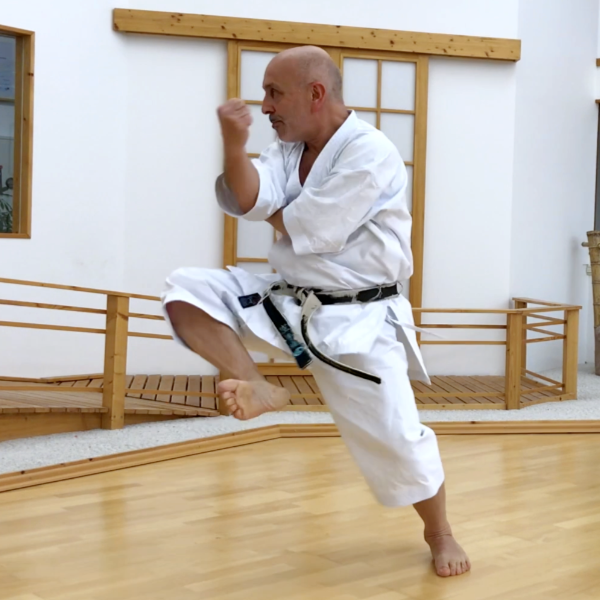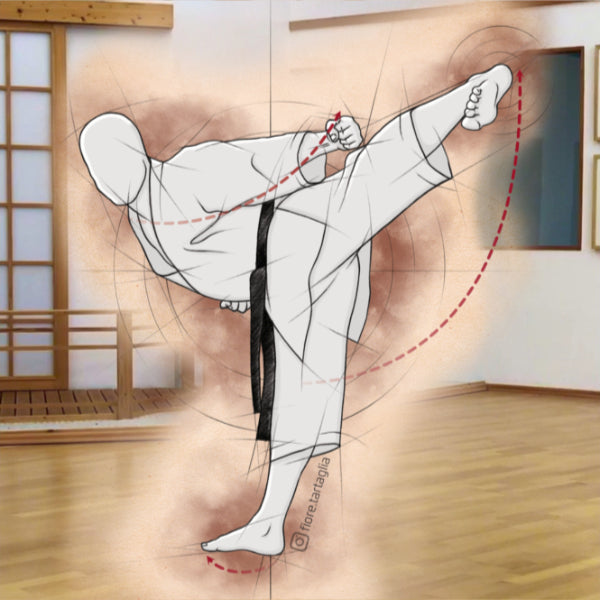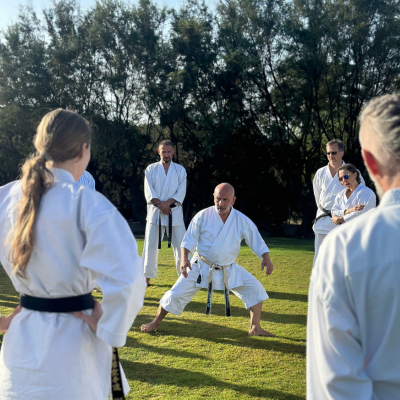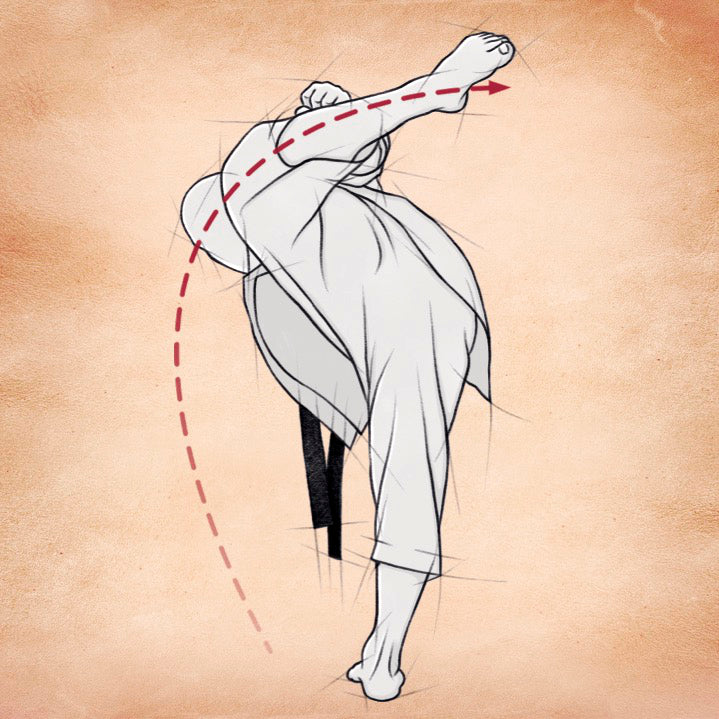Study by the University of Regensburg

Karate is a traditional martial art used for self-defense and, thanks to its versatility, has positive health effects, regardless of the karateka's age. A research team at the University of Regensburg has now demonstrated that even people suffering from Parkinson's disease benefit from karate training.
Sport and exercise alleviate symptoms of Parkinson's disease
Slowed movements, tremors, and balance problems – these are the symptoms of Parkinson's disease. In addition to these motor impairments, those affected often suffer from speech impairments and disease-related pain, as well as depressive moods, anxiety, and cognitive decline.
A Parkinson's diagnosis therefore significantly limits quality of life. It can lead to behavioral changes and social withdrawal. To avoid falling, patients move as little as possible; this, in turn, increases the risk of falls. The loss of independence can exacerbate anxiety and depression.
Although the neurodegenerative disease is considered incurable, and a causal treatment is currently unavailable, symptoms and complaints can be effectively controlled over years and decades with appropriate therapies.
Karate beats illness
With regular training to more self-confidence
Various studies have already shown that exercise and physical activity, in particular, alleviate the symptoms of Parkinson's disease. Physical activity increases muscle strength, performance, and endurance. Psychosocial factors also improve.
In their study published in December 2017, Dr. Katharina Dahmen-Zimmer from the Institute of Psychology and Prof. Dr. Petra Jansen from the Institute of Sports Science at the University of Regensburg examined the effects of karate and dancing as exercise training for Parkinson's patients.
For the study, 16 Parkinson's patients participated in karate training according to the regulations of the German Karate Association (dkv), nine participated in dance training, and 12 formed an inactive control group. Both forms of exercise were offered once a week for one hour each over a period of 30 weeks. The trainers were Dr. Katharina Dahmen-Zimmer (3rd Dan), Helmut Körber (7th Dan, examiner in the Bavarian Karate Federation), and dkv President Wolfgang Weigert (7th Dan).
Training becomes an everyday routine
Is training in a martial art like karate practical and beneficial for Parkinson's patients? The study provided a clear, positive answer to this central question.
Balance, cognitive performance, and emotional well-being were assessed before and after the training phase. Both training groups showed significant improvements in balance. This result is particularly significant because improved balance actively counteracts instability and thus the risk of falls. Improved stability and reduced fear of falling mean that patients move more and become more active in their daily lives.
The study results also show that, unlike the karate group, a significant decline in mood was observed in the control group. The study authors emphasize that the fact that training was respectful and non-competitive certainly contributed to the positive effects on emotional well-being in the karate group. Learning and mastering complex karate techniques promotes self-confidence and the feeling of being able to successfully overcome even difficult situations and challenges on one's own. The demanding training requires great concentration, which results in switching off distracting or tormenting thoughts. The resulting serenity can be compared to meditative approaches.
One of the most important study findings is the lasting effect: a large proportion of patients continue to participate in the training with high motivation even after the study ended. Katharina Dahmen-Zimmer emphasizes: "We consider the integration of exercise training into normal lifestyles to be very positive. Furthermore, the social relationships that have developed within the groups are continued and strengthened. Our concept of offering partners the opportunity to participate has also proven successful."
Lifelong learning
The research team led by Prof. Dr. Petra Jansen was able to demonstrate similarly positive results and the finding that karate keeps people physically and mentally fit in old age in 2011 with a study in which 48 senior citizens aged 67 to 93 took part.
The focus was on the question of whether karate, in addition to improving physical health, also leads to positive changes in cognitive performance and individual well-being. "The aim was to specifically compare the effects of karate training with the effects of purely cognitive or purely motor training," says Jansen.
While all training programs tended to improve cognitive performance, memory and visual memory improved most significantly in the karate group. According to the Regensburg researchers, this is due to the fact that karate training required the participants to memorize complex movement sequences. The research team also demonstrated that the karatekas showed significantly less depressive moods at the end of the experiment than before.
High art instead of flat clichés
When you think of karate, you usually think of acrobatic movements or smashing bricks with your bare fists. Far from it: "Karate training involves the whole body, and there's a deliberate alternation between tension and relaxation," explains Katharina Dahmen-Zimmer. As a holistic form of exercise, karate training promotes conditioning, coordination, and cognitive skills. It improves circulation and breathing, promotes health and flexibility, and simultaneously leads to physical and mental well-being and relaxation. Thus, karate is not just a martial art, but also a health-promoting movement technique that can accompany you even in illness and even into old age.
Tradition and training
Karate is a martial art that developed in Okinawa under the influence of Chinese martial arts. It wasn't until the early 20th century that karate first became known in Japan, and later in the Western world. Karate is practiced with various focuses, whether as effective self-defense, as a health-promoting sport, as a competitive sport, or as a spiritual path.
Training includes the elements of kihon (basic technique), kata (form), and kumite (partner training). In the basic technique, specific techniques such as punches, kicks, and combinations are practiced. In kumite, fighting is more or less free—attacks and defenses are carried out jointly with a partner. Injuries are ruled out, as the Shotokan style, as well as the corresponding rules of the German Karate Federation (DKV), requires controlled execution of strikes and kicks and stopping in front of the training partner's body. Kata, on the other hand, refers to a series of techniques, movements, and turns learned in a prescribed sequence, requiring special memorization skills.
Here is the original article:
Fighting Parkinson's with martial arts
The study was published in Frontiers in Medicine under:
www.frontiersin.org/articles/10.3389/fmed.2017.00237/full
Markus Hartmann

